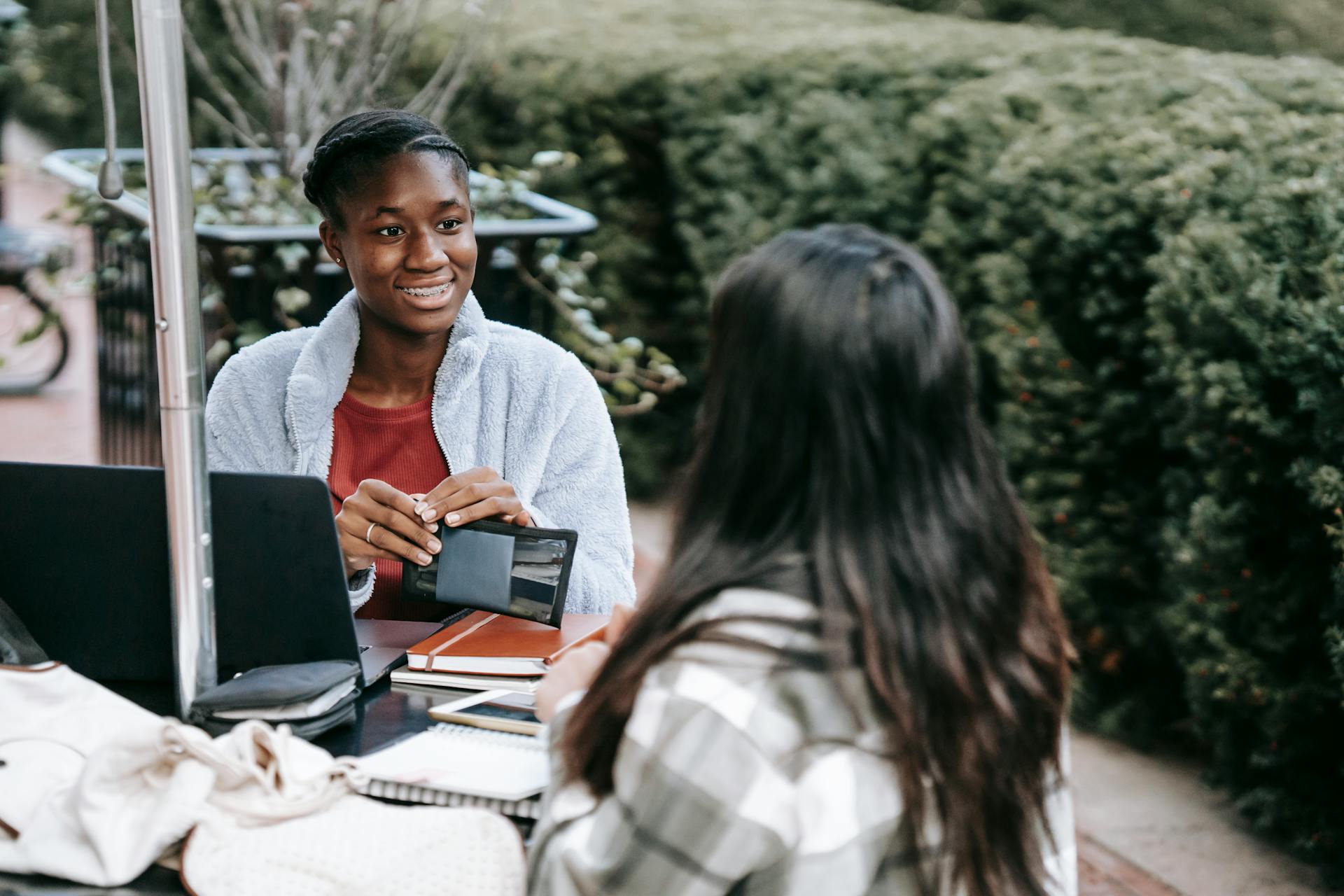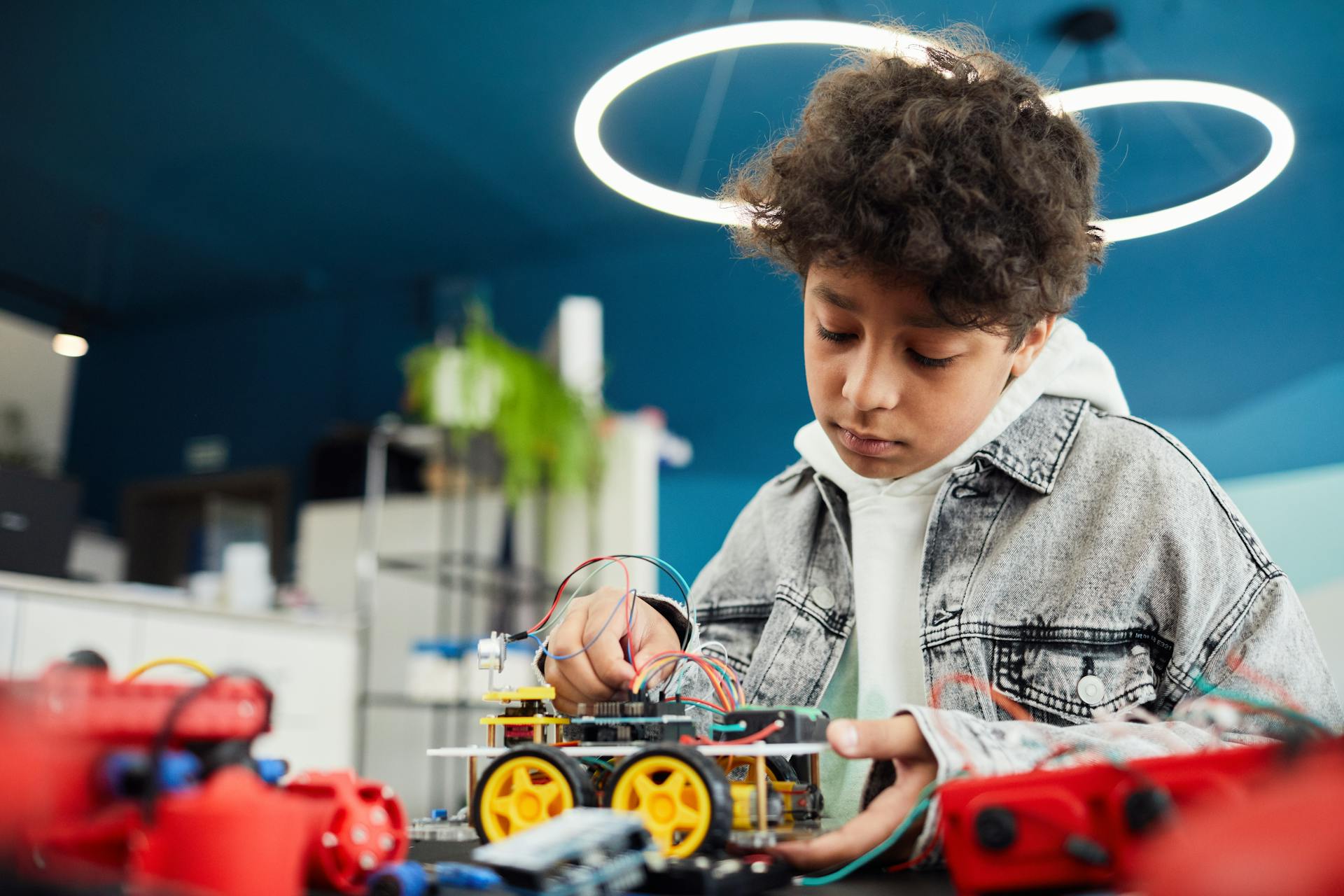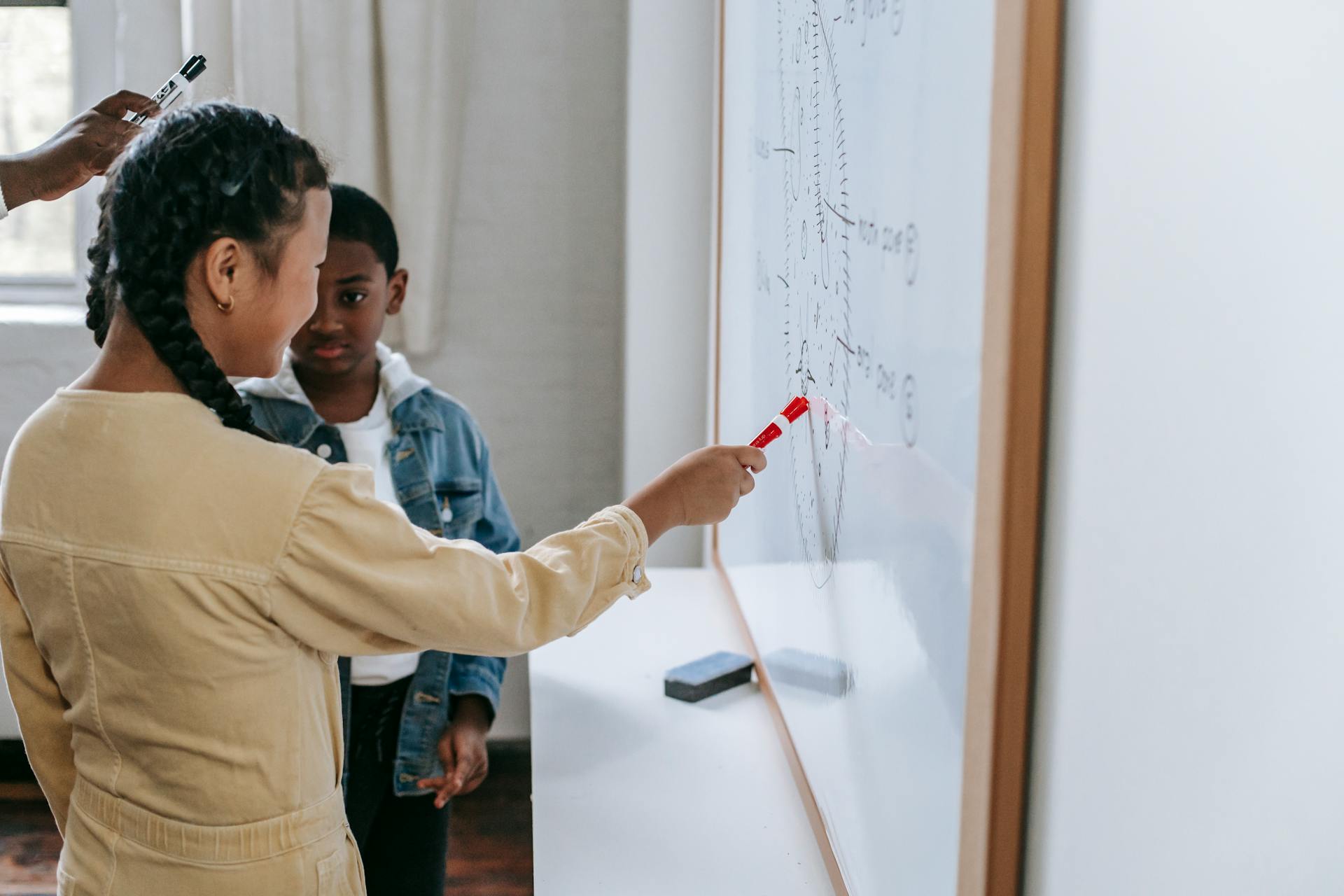
Demonstrating learning is a powerful way to show what you've learned. Research has shown that students who demonstrate their learning through projects and presentations tend to retain information better and perform better on tests.
By putting their knowledge into practice, students develop a deeper understanding of the material. For example, in a study on math education, students who worked on real-world math problems showed a significant improvement in their math skills compared to those who only studied abstract concepts.
Demonstrating learning also helps students develop important skills like communication, problem-solving, and critical thinking. These skills are essential for success in both academics and the workforce.
By giving students the opportunity to demonstrate their learning, teachers can get a more accurate picture of what their students have learned. This helps teachers adjust their instruction and provide targeted support where needed.
Check this out: Statistical Learning Skills
What Is Demonstration of Learning?
Demonstration of learning is a crucial teaching method that involves showing students how to perform a task or process while explaining the concepts and techniques involved. It's a hands-on approach that helps students learn by doing.
To start, choose a suitable activity to demonstrate, such as sweeping a room or peeling a fruit, and try to do it in front of a small audience. This could be family members or even just by yourself, imagining an audience.
The demonstration should include explaining what you plan to do and the intended learning outcomes. You should also ask some initial questions to find out what your audience already knows about the process.
As you give the demonstration, provide explanations as required, ask questions to check their comprehension, and mention any precautions as necessary. Finally, end the demonstration by briefly recapping the main points or inviting your audience to provide these.
Here are the key steps to follow:
- Explain what you plan to do and the intended learning outcomes.
- Ask initial questions to find out what your audience already knows.
- Give the demonstration, providing explanations and asking questions.
- Recap the main points or invite your audience to provide them.
- Ask for feedback and list ways to improve the demonstration.
Benefits of Demonstration of Learning
Demonstrations are particularly useful in science, engineering, technology, and medicine. They help learners visualize concepts, making it easier to understand complex ideas.
One of the main advantages of demonstrations is that they provide a hands-on learning experience. This approach is interactive, making learning more engaging for students.
Demonstrations help students learn better by seeing things in action. They clarify complex concepts that might be difficult to understand in theory.
Students are better able to retain what they have learned through demonstrations. The visual and practical nature of demonstrations helps create a lasting impression, making it easier for students to remember concepts.
Teacher demonstrations are important because they provide students with real-life experiences, raising their interest and motivation. They enable teachers to focus students on a particular phenomenon or event, such as the starch test for foods.
Demonstrations can be used to develop and challenge students' understanding, helping them carry out practical work more effectively.
Here are some possible purposes of demonstrations:
- to illustrate a phenomenon, concept, law, theory or process
- to motivate and stimulate, arousing students' curiosity prior to teaching
- to help students articulate and explore their existing ideas
Traditional Teaching vs Demonstration of Learning
Traditional teaching methods can be quite passive, with students simply taking notes or listening to lectures. This can lead to poor memory retention and understanding.
In contrast, the demonstration method puts learners at the center of the learning process, allowing them to apply what they learn and improving their memory retention and understanding.
Consider reading: Learning Retention Rates
Unlike traditional teaching, which often presents information in silos without emphasizing the relationships between subjects, the demonstration method allows students to construct their knowledge out of their experiences and understand how the concepts being taught are interconnected.
The key differences between traditional teaching and demonstration of learning are summarized below:
- Emphasis on active learning: Demonstration method vs. traditional teaching
- Experiential learning: Students experience the phenomenon being taught
- Constructivism: Students construct their knowledge out of their experiences
What Is the Teaching?
The demonstration method is an instructional strategy that shows how something works or how to do something. This method is all about hands-on learning, where the teacher or instructor demonstrates the process or skill to be learned.
Traditional teaching, on the other hand, is a more passive approach where the teacher lectures or explains the material to the students. The demonstration method is a more engaging and interactive way of learning, which can lead to better retention and understanding of the material.
In a traditional teaching setting, the teacher might stand at the front of the class and talk for an extended period, while the students listen and take notes. In contrast, the demonstration method encourages students to participate and ask questions.
By showing students how to do something, the demonstration method helps to build their confidence and competence in the subject matter. It's a more effective way of learning, especially for hands-on skills or complex concepts that require visual explanation.
For your interest: Demonstration Learning Method
Traditional Teaching
Traditional teaching methods often rely on passive learning, where students simply take notes or listen to lectures without much opportunity for hands-on experience or application. This can lead to a lack of engagement and understanding among students.
Traditional teaching methods present information in silos, without emphasizing the relationships between subjects, making it difficult for students to see how different concepts are interconnected. This can make learning feel disconnected and abstract.
In traditional teaching, students are often given information that is not easily relatable to their daily lives, making it harder for them to see the practical applications of what they're learning. This can lead to a lack of motivation and interest in the subject matter.
Here are some key differences between traditional teaching and demonstration methods:
Preparing for Demonstration of Learning
Planning your demonstration carefully will contribute to its success. To plan your demonstration, include the learning objectives, such as what you want the demonstration to achieve and how you will introduce the demonstration.
Intriguing read: Learning from Demonstration
You should also think about the equipment and materials needed, the steps you will take when carrying it out, and the key questions you might ask at each stage. Additionally, consider how you will arrange your students so all can see, and how you will support those with special educational needs.
The importance of good planning cannot be overstated if you want your students to achieve their potential. Practising doing a general demonstration on your own first can help you become more expert at planning demonstrations and identifying the learning intentions.
To help you with your planning, you can read Resource 3, 'Planning lessons', and share your plans with another science teacher at your school to help clarify any questions you may still have.
Here are some factors to consider when choosing the right activities for demonstration method:
- Choose activities that align with the learning objectives
- Select activities that are appropriate for the age and level of your students
- Pick activities that are feasible to demonstrate in the classroom
- Ensure that you have all the necessary materials and equipment
Teachers who have a classroom full of students who can articulate how they will know they are learning will have students that are more motivated to learn as they see value and progress in meeting the identified learning demonstration of the lesson.
Implementing Demonstration of Learning
Implementing Demonstration of Learning can be a game-changer for students, making learning more engaging and effective.
The demonstration method can enhance the learning experience of students if implemented properly. It helps students retain information better.
One key strategy for implementing the demonstration method is to ensure it is done correctly. This means following a structured approach to deliver the demonstration.
By structuring the demonstration, you can ensure that students get the most out of the experience.
Effective Demonstration of Learning
Practising demonstrations in a safe environment is a great way to build confidence when combining questioning techniques and explanations. Choose a simple task, like sweeping a room or peeling a fruit, and do it in front of family members.
To make the most of this practice, remember to collect the necessary tools and materials, explain what you plan to do and the intended learning outcomes, and ask initial questions to gauge your audience's prior knowledge.
Having tried a demonstration, you're now ready to teach your lesson, where students will produce their own learning demonstration, showing they can demonstrate the skill independently and accurately.
Effective Presentation
Use clear and concise language to ensure your message gets across to your audience. This will help prevent confusion and keep students engaged.
Engage your students through questioning and discussion to make the demonstration more interactive. By asking questions, you can check their comprehension and encourage participation.
Visual aids and props can greatly enhance understanding, so don't be afraid to use them. This can include diagrams, pictures, or even props related to the demonstration.
Demonstrate each step slowly and clearly, giving students time to process the information. This will help prevent overwhelming them with too much information at once.
Use positive reinforcement to boost student appreciation and motivation. This can be as simple as acknowledging their efforts or offering praise.
Here are some strategies to keep in mind for an effective presentation:
- Use clear and concise language
- Use visual aids and props to enhance understanding
- Engage the students through questioning and discussion
- Demonstrate each step slowly and clearly
- Use positive reinforcement to boost student appreciation and motivation
Improved Retention
Students learn better when they see things in action. This is because demonstrations help to clarify complex concepts that might be difficult to understand in theory.
Visual and practical learning makes a lasting impression, which is why students are likely to remember the concepts more effectively. This is backed up by the fact that students are better able to retain what they have learned through demonstrations.
Here are some key benefits of demonstrations in terms of retention:
- Students are better able to retain what they have learned through demonstrations.
- The visual and practical nature of demonstrations helps to create a lasting impression.
Sources
- https://educorpus.com/demonstration-method/
- https://en.wikipedia.org/wiki/Demonstration_(teaching)
- https://www.edglossary.org/demonstration-of-learning/
- https://www.open.edu/openlearncreate/mod/oucontent/view.php
- https://elevatedachievement.com/articles/how-to-empower-your-students-to-demonstrate-their-learning/
Featured Images: pexels.com


